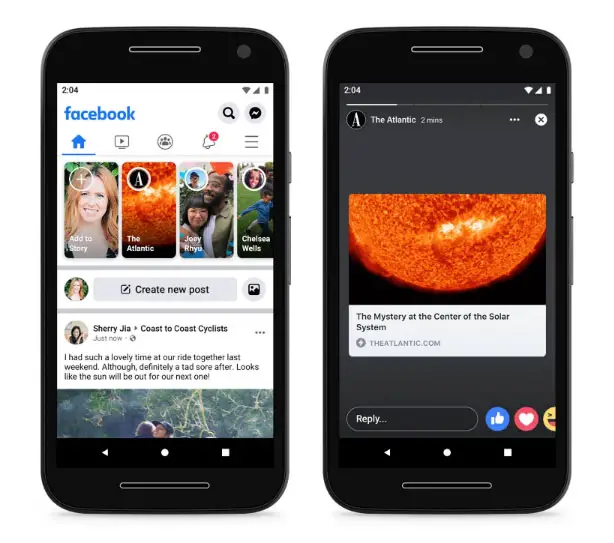Facebook has updated its Instant Articles with a new recirculation and navigation surface, smarter CTA and ad placements, and support for Facebook Stories.
Facebook first introduced its fast-loading Instant Articles format back in 2015 and made it available to all Publishers a year later, to “to provide a faster, Facebook-native way to distribute content that Publishers already produce for their own websites.” Instant Articles allows publishers across various verticals to effectively distribute and monetize their articles, with faster load times that are up to three times faster and up to 30% more time spent than ordinary web articles on mobile.
Now, Facebook has announced a refresh that introduces a “new article recirculation and navigation surface, […] a new integrated yield model that makes smarter Call to Action (CTA) and ad placements, and […] support for IA links in Facebook Stories.
New Recirculation and Navigation Surface
The new recirculation and navigation surface in Instant Articles lets users browse other headlines from the same Publisher, more quickly, while also allowing them to explore different topics “from a source they trust and love.”
When users swipe right from an Instant Article, they access the “More from” recirculation surface, giving them “a personalized, chronological view of up to 50 articles from the same Publisher.” Furthermore, in the redesigned footer following each article, users also get a personalized view of other articles they may be interested in.
The navigation footer now also features dedicated engagement buttons to let people save, discuss, and share Instant Articles. The footer will disappear when users are reading, thus increasing viewable content.
Smarter CTA and Ad Placements
CTA units within Instant Articles are good ways to drive Publisher business goals – like Page likes, App downloads, and newsletter signups – but ads or CTA placements were “served blindly” up until now. Now, Facebook has introduced an integrated CTA and ad yield model, which will estimate the value of a CTA impression based on regional averages of what Publishers might pay to achieve objectives attached to it.
The ad yield model then serves a CTA or an ad based on whether each gives a greater estimated Publisher value. Publishers can then attribute a value to a CTA conversion.
Instant Articles Support for Facebook Stories
Finally, Facebook has now launched support for Instant Article links in Facebook Stories. These include links created by Pages on Facebook and links that are cross-posted from Instagram. This allows users to read an Instant Article directly from a Story.

Users retain the same Instant Articles experience on Facebook, and Publishers get a fast-growing source of distribution for their articles. There are currently over 300 million people using Facebook Stories every day, as of March 2019.
Overview
Facebook says that since it launched these features, there’s been a 9% increase in RPMs (Revenue per Thousand Article Views) for Publishers, and users are spending more time reading articles from the same Publisher.
[box]Read next: How To Use Facebook Creator Studio To Schedule Posts On Instagram And IGTV[/box]
